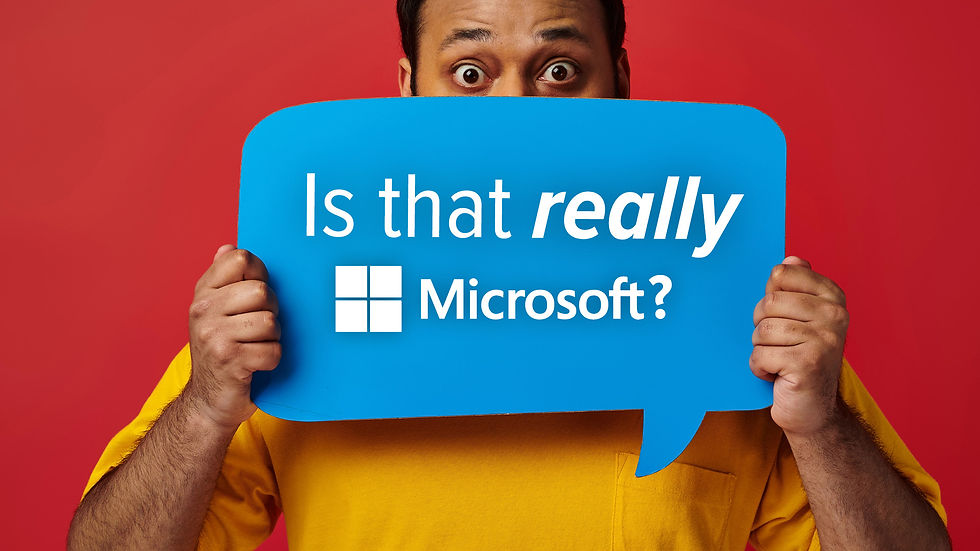Beware: Is that Microsoft... or a phishing attempt?
- Lewis Bleasdale
- Aug 4
- 2 min read

When you receive an email from Microsoft, you likely open it without hesitation. Correct?
After all, it's Microsoft, one of the largest and most reliable tech companies globally.
But what if that email isn't actually from Microsoft?
Cybercriminals often exploit trusted brands to deceive individuals. Currently, Microsoft is the most impersonated company worldwide in phishing scams.
Recent research indicates that 36% of brand-related phishing attacks in early 2025 were impersonating Microsoft.
That's a significant figure.
Google and Apple follow on the list. Together, these three tech giants account for more than half of all phishing scams.
So, what's happening? More importantly, how can you protect your business?
First, let's briefly discuss what phishing is.
Phishing involves a criminal sending you a fake email, text, or message that appears to be from a legitimate company you know and trust.
The aim is to get you to click on a link, open a harmful attachment, or provide sensitive information like passwords, credit card numbers, or even your full identity.
The consequences can be severe: stolen money, compromised systems, confidential data breaches, and significant trouble for your business.
The worst part: Phishing emails are becoming more sophisticated, with fewer spelling mistakes and suspicious-looking links.
Scammers replicate real company logos, create fake websites that look exactly like the real ones, and even spoof email addresses so it appears the message is genuinely from Microsoft, Google, or Apple.
Researchers have recently noted an increase in phishing attacks pretending to be Mastercard, with fake websites fooling individuals into entering their card details.
This trend is concerning, showing that cybercriminals are continually developing new tactics to deceive people.
So, how can you determine if that email from Microsoft is genuine or a dangerous fake?
It's all about taking your time and staying vigilant.
Authentic emails from companies like Microsoft will never push you into urgent actions such as "Click this link immediately or your account will be locked." Such language is a major warning sign.
Always carefully check the sender's email address. It might seem correct at first glance, but closer inspection could reveal slight alterations, like “micros0ft.com” instead of “microsoft.com”. Cybercriminals count on you overlooking these small details.
And whatever you do, avoid clicking on links directly from an uncertain email. If you're unsure, type the official website address manually into your browser. It's always safer.
Being cautious might seem inconvenient at times, but it's nothing compared to dealing with the aftermath of a cyber attack.
Phishing scams are only going to become more convincing. That's why it's crucial to:
· Stay vigilant
· Invest in robust cybersecurity tools
· Use smart protections like multi-factor authentication (requiring two forms of ID to log in, not just a password)
Remember: The more trusted the brand, the larger the target it becomes for scammers. And that email that seems to be from Microsoft? It might just be a wolf in sheep's clothing.
We can help you and your team stay better protected and more vigilant against phishing scams like these. Get in touch.







Comments